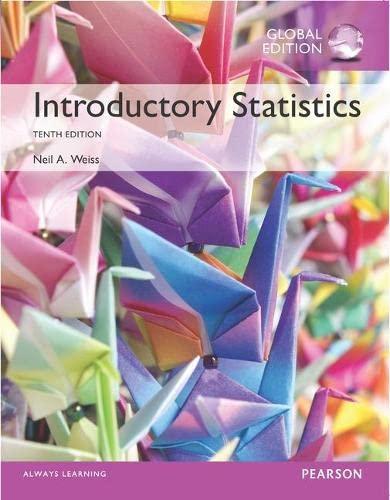Weights of 18- to 24-Year-Old Males. Refer to the weight data in Table 2.8 on page 76.
Question:
Weights of 18- to 24-Year-Old Males. Refer to the weight data in Table 2.8 on page 76. Note that there are 37 observations,
the smallest and largest of which are 129.2 and 278.8, respectively.
Apply the preceding procedure to choose classes for cutpoint grouping. Use approximately eight classes. Note: If in Step 2 you decide on 20 for the class width and in Step 3 you choose 120 for the lower cutpoint of the first class, then you will get the same classes as used in Example 2.14; otherwise, you will get different classes (which is fine).
Contingency Tables. The methods presented in this section and the preceding section apply to grouping data obtained from observing values of one variable of a population. Such data are called univariate data. For instance, in Example 2.14 on page 76, we examined data obtained from observing values of the variable “weight” for a sample of 18- to 24-year-old males; those data are univariate. We could have considered not only the weights of the males but also their heights.
Then, we would have data on two variables, height and weight. Data obtained from observing values of two variables of a population are called bivariate data. Tables called contingency tables can be used to group bivariate data, as explained in Exercise 2.114.
Step by Step Answer:






